The ins and outs of creating flavor wheels and why you should know
I am fond of the wine aroma wheel, one of the most renowned flavor wheels, as a teaching tool for helping students describe wine.
A news headline picked my curiosity a few weeks back.
"Sensory scientists and taste testers create world's first wagyu flavour wheel."
I had no idea what wagyu was and why scientists needed to develop a flavor wheel [1].

I researched and discovered that wagyu was one of the four Japanese beef breeds and one breed quite expensive to purchase.
So what was the need for a flavor wheel for beef?
Why, in the first place, do scientists develop flavor wheels
on the model of the wine aroma wheel?
And why should you care?
Why do flavor wheels exist?
The answer is often simple: People needed a tool to describe the flavor nuances of the product.
For producers, it becomes a tool to assess the quality of their products and describe their products' uniqueness.
It becomes a tool for consumers to learn the different nuances of the product flavors and the factors that could influence these differences.

Flavor wheels have been developed on many food products: beer, wine, tea, coffee, chocolate, honey, cheese, etc.
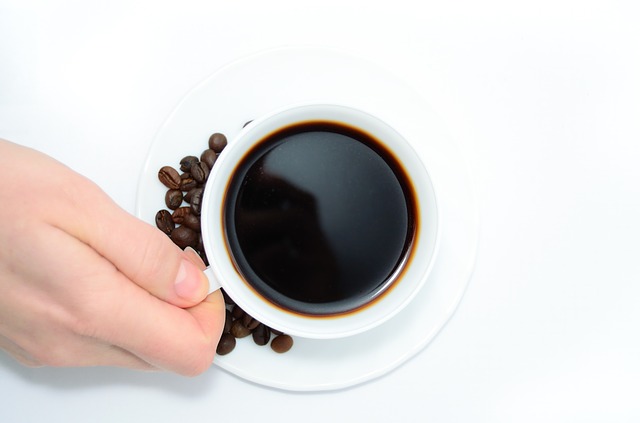
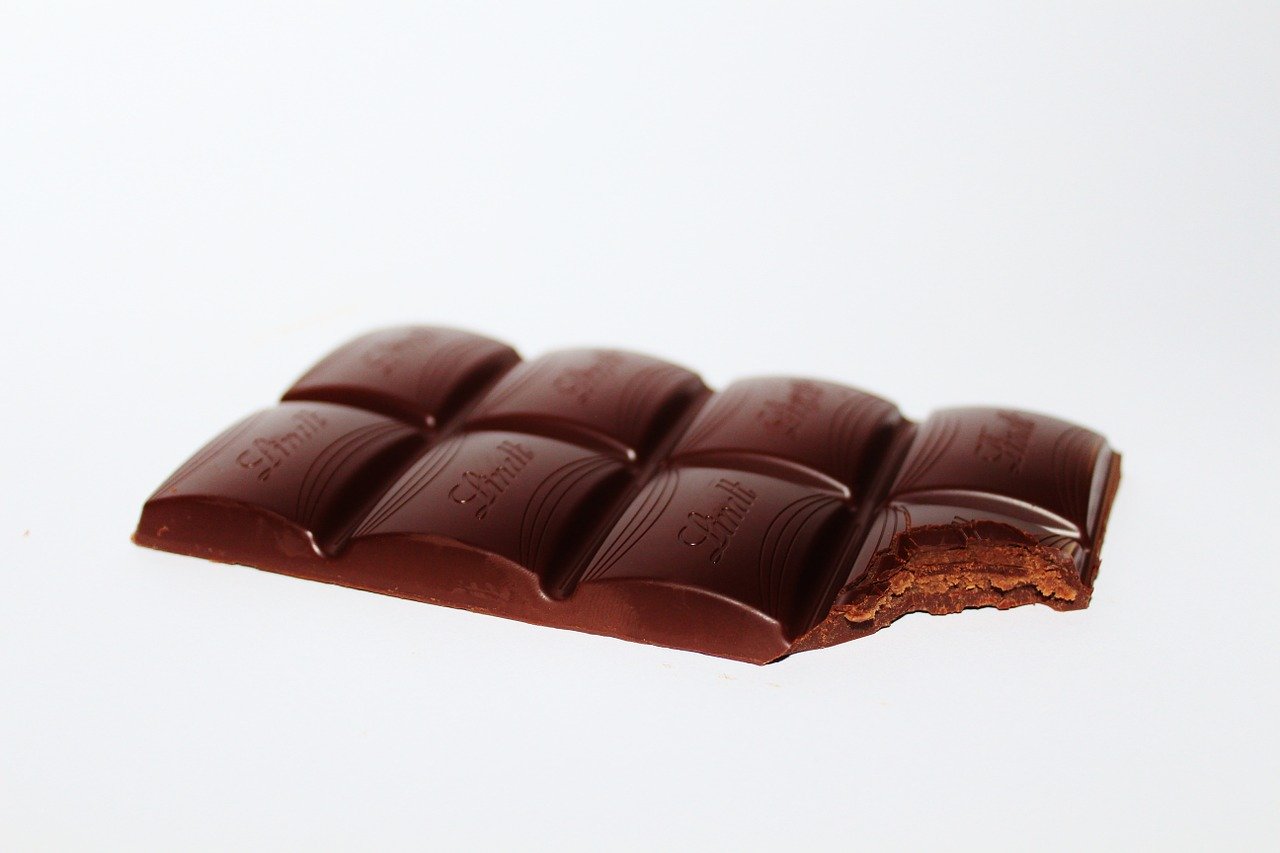



The common denominator of these products is the complexity of their flavors.
Flavors of these products are the expression of the growing conditions and the processing methods, like wine.
As a wine enthusiast, the flavor nuances you can perceive in a single wine glass may intrigue you.
Tasting a broad range of wines lets you discover how viticulture practices, climate, or winemaking processes influence the flavors.
And for that, you need to take notes and have words capturing these nuances. That's when flavor wheels come handy.
How do people create flavor wheels?
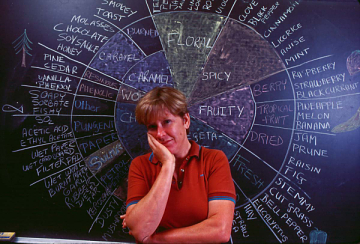 Dr. Ann C. Noble and the Wine Aroma Wheel
Dr. Ann C. Noble and the Wine Aroma Wheel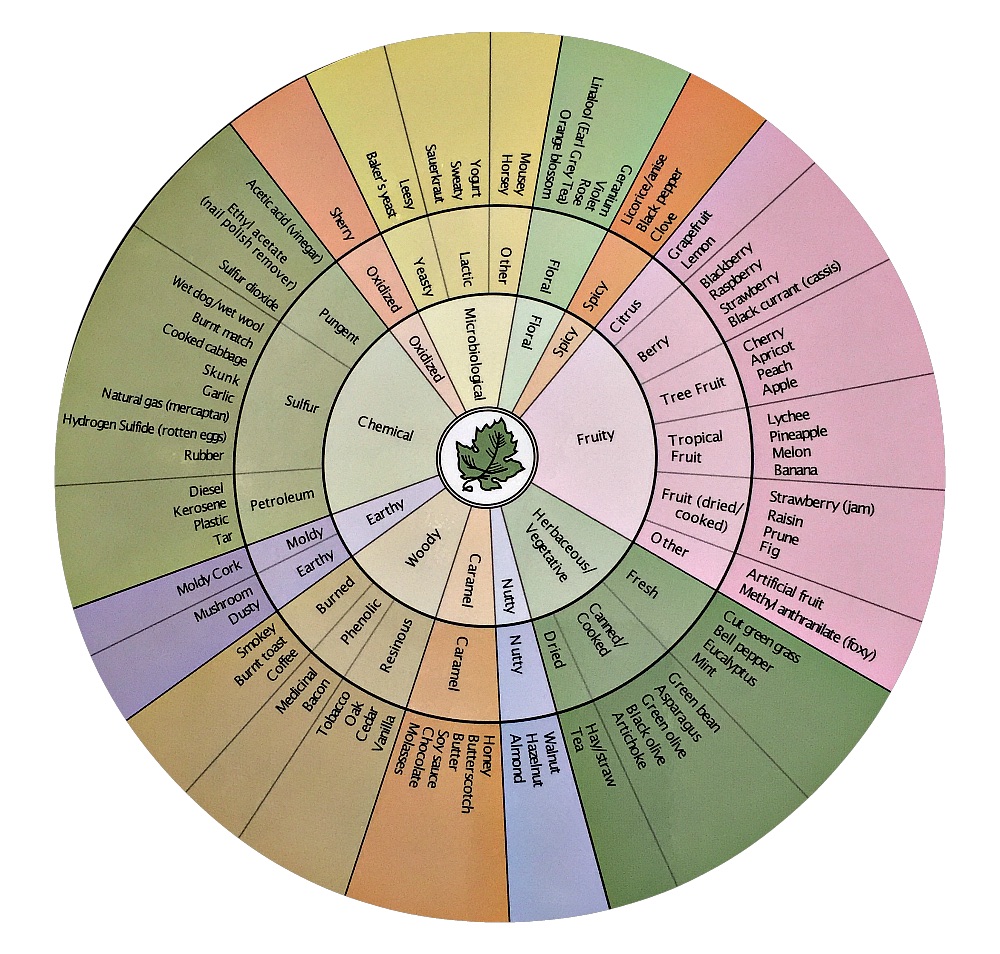
Several people asked me recently: how can I create an aroma wheel to promote my regional wines?
The creative path of the product flavor wheels I cited above varied; however, we can outline the critical step below.
1-Define the product space boundaries
- Would the flavors represent a broad product category, like generic table wine? or
- Would the characteristics describe a smaller group such as red wine? or
- Should it be specific to define regional particularities, e.g., Cabernet Sauvignon from Coonawarra in Australia?
All these complex agricultural products may have different flavor profiles year after year. It's essential to consider several vintages or years of production if product aging contributes to developing new flavors.

Defining the boundaries of the product space to describe will dictate the flavor wheel future relevance and applicability.
2- Select a large sample of products fitting that space
In most studies, the selection includes more than 100 samples, selected to represent a region, a maker, a crop variety or animal breed.
People rely on their local knowledge to assemble the sample set.
3- Define the sensory evaluation process
In the early days, the evaluators were product experts, winemakers, coffee roasters, etc. As the science of sensory developed, the use of trained descriptive panelists increased.
However, some studies asked frequent users of the product to come to evaluate the sample selection.
As you can imagine, tasting hundreds of samples takes several sessions conducted with best practices in mind to avoid tasters' fatigue.
4- Collect the sensory data
The data collection process can be very simple or more involved, depending on the end goal and the flavor wheel's desired precision.
- Evaluators can describe each sample freely; term frequencies are used to determine the importance of keeping the descriptive term on the flavor wheel.
- Evaluators describe the samples freely and, through discussions, agree on which term to keep or not.
- Evaluators describe the samples freely, through discussions agree on which term to keep or not, and assess a second time the samples for each descriptive term's presence/absence (sometimes strength).
Will the wheel include only aromatic terms, and be an aroma wheel? Or
Will it includes aromatics, basic tastes, and in mouth feeling sensations, and therefore be a flavor wheel?
The final choice depends on the flavor complexity and the level of details the future users will want to get in the product description.
5- Analyze the data
Again the data analysis can be simple to complex. Indeed, statistical analysis can help group terms into different subcategories, the middle section of the wheel.
6- Visualize the findings on a wheel
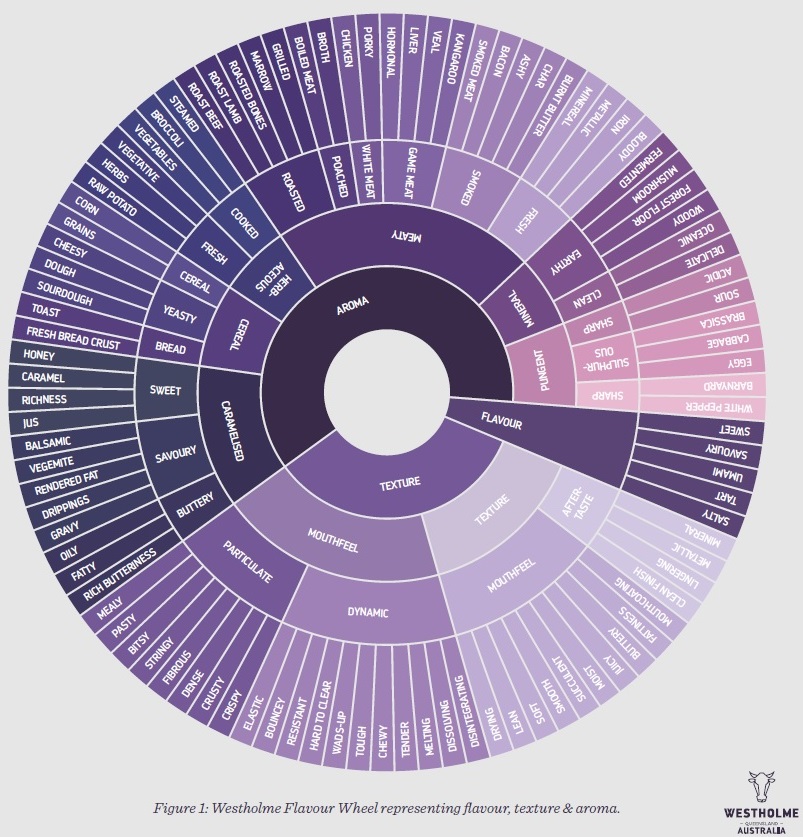 The Wagyu beef flavor wheel
The Wagyu beef flavor wheelWhile the wheel representation is easy to understand and use, the space on the disc is limited. You can include 45-60 terms, so they are still readable. One of my colleagues, Dr. Chambers, thinks that a tree representation would work better than a wheel.
Especially now that technologies can give us access to 3-d representations very quickly.
How do you use flavor wheels?
Flavor wheels are simple tools to guide us in the process of tasting. The terms' list is not exhaustive but includes the flavor terms that we could perceive when tasting a product belonging in the space defined by the wheel creator.
The flavor wheels take us through a categorization process.
How would you categorize this flavor? You then look at the generic categories in the center and identify a possible group.
Now, what subcategory? And so on.
Sometimes we get stuck in the generic category because we can't identify furthermore. And that's alright. Our ability to pick up more flavor nuances comes with practices—more on this next time.
Do you use flavor wheels?
When do you find them particularly helpful?
Leave me a comment below.
Reference
Sensory scientists and taste testers create world's first wagyu flavour wheel
Published August 27, 2020
Home > Wine Language >Flavor Wheels





New! Comments
Have your say about what you just read! Leave me a comment in the box below.